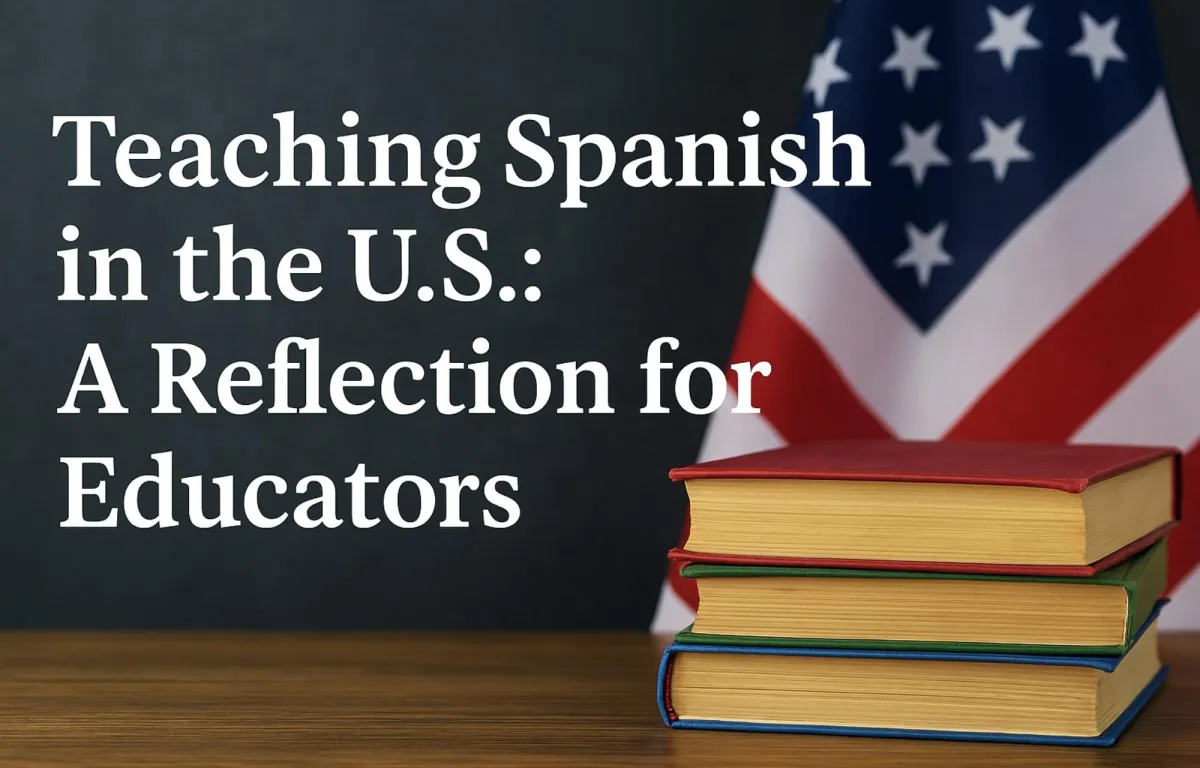
Teaching Spanish in the U.S.: A Reflection for Educators
Before I came to the United States, I was born and raised in Chile. I also lived in Spain for nearly a year, and I had the privilege of traveling throughout Latin America and Europe. In all those places, the value of speaking multiple languages was never questioned. People wanted to learn languages—English, French, German—because it was seen as an asset, a pathway to growth, opportunity, and cultural connection.
When I began my master’s degree in the U.S., I took a class called Spanish in the United States, a linguistics course that completely shifted my perspective. It made me realize something I had never fully understood before: Spanish in the U.S. is not just “a foreign language.” It is the language of immigrants. It carries stories of displacement, survival, hope, and identity. And because of that, it is not always celebrated the way it should be.
Here, unlike in Chile or Europe, teachers often feel the need to explain why learning another language matters. Even within education, there is still hesitation—sometimes even fear—that learning Spanish (or any additional language) could somehow interfere with English development. But the research is clear: learning another language never harms the brain. On the contrary, it strengthens it. Bilingualism and multilingualism enhance problem-solving, memory, and flexibility of thought.
And yet, Spanish in the U.S. occupies a complicated space. It is the second most spoken language in the country, yet it is also the language that many families feel pressured to hide. Parents, out of fear that their children will “fall behind,” often stop speaking Spanish at home. Children grow up losing fluency, not because they want to, but because they feel they have to. What should be a gift becomes a burden.
This makes the role of the Spanish teacher uniquely challenging. We are not simply teaching grammar and vocabulary. We are teaching a language that is living, breathing, and deeply connected to identity. For some students, Spanish is heritage. For others, it is discovery. For all, it is an opportunity to open the mind and expand the heart.
Being a teacher today is never easy. But being a Spanish teacher in the United States comes with a particular responsibility. We must advocate not only for the academic value of our subject but also for its cultural, social, and human value. Spanish is not just another subject in the schedule—it is a bridge between worlds. That is why I am passionate about this work. I am constantly learning, researching, and reflecting so that I can be a better Spanish teacher, one who helps students and families see the beauty of bilingualism and the importance of preserving language as a core part of identity.
To my fellow educators: I invite you to reflect on the power you hold. When you teach Spanish—or when you affirm the presence of Spanish-speaking students in your classroom—you are not just teaching a language. You are contributing to a more inclusive, multilingual, and culturally aware society. And that, perhaps, is one of the most meaningful lessons of all.
My novel Between Two Worlds was born from these very questions—about language, culture, and identity. I invite you to step into Ana’s world, and maybe see your own story, or your neighbor’s, reflected there.
Javiera Navarrete MA.– Author, Educator, Advocate for Hispanic Voices Passionate about bilingualism, culture, and storytelling, Javiera writes novels and essays that explore identity, belonging, and the human experience.
📚 Read her novel: Between Two Worlds – [Insert book link]
🌐 Website / Blog: https://booksbyjavi.com/
📸 Instagram: Click Here | Facebook: Click Here | X/Twitter: Click Here
💬 Connect with Javiera and join the conversation about language, culture, and identity.